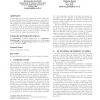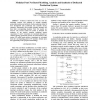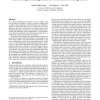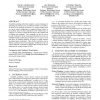382 search results - page 45 / 77 » Product derivation for solution-driven product line engineer... |
SIGSOFT
2007
ACM
15 years 10 months ago
2007
ACM
In this paper we propose a behavioural model, namely the Extended Modal Labeled Transition Systems, as a basis for the formalization of the different notions of variability usuall...
ICRA
2003
IEEE
15 years 3 months ago
2003
IEEE
−−−− Ordinary t-timed Petri Nets are used for modeling, analysis and synthesis of random topology production systems and networks. Each production system is first decompose...
AOSD
2008
ACM
14 years 12 months ago
2008
ACM
In a software product line, the binding time of a feature is the time at which one decides to include or exclude a feature from a product. Typical binding site implementations are...
ICSE
2008
IEEE-ACM
15 years 10 months ago
2008
IEEE-ACM
Variability modelling with feature models is one key technique for specifying the problem space of Software Product Lines (SPLs). To allow for the automatic derivation of a concre...
AOSD
2007
ACM
15 years 1 months ago
2007
ACM
Product line development places emphasis on quality attributes like understandability, maintainability, reusability and variability. Better modularization techniques like ...




